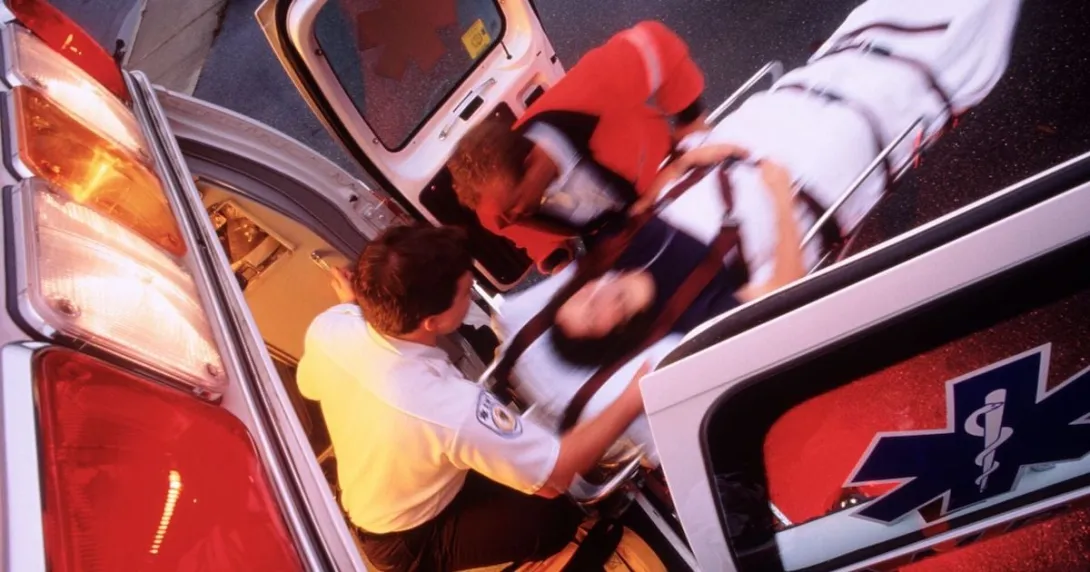The agencies are harnessing health technologies to improve doctor-patient interaction by reaching patients – and their health problems – right where they reside. Here’s how they plan to transform that from buzzword into better care.
Home is where the real medical record is – if only because it’s also where medical problems live.
To meet health issues at that door, the Departments of Defense and Veterans Affairs are stepping down the walk toward the Patient-Centered Medical Home.
The PCMH, in this instance, is the DoD and VA response to the flood of medical data and how to coordinate that into a single, cohesive approach for patient care. In short, “We need someone to take command and control,” said Paul Grundy, president of the Patient Centered Primary Care Collaborative, director of healthcare transformation for IBM and a former U.S. Air Force flight surgeon.
Better patient and population care
The concept of a “medical home” puts the new approach in perspective. Proponents believe that by giving the patient a portal to access his or her medical records and the ability to see tests results in real-time, schedule visits and ask questions of the medical team electronically, the PCMH will go a long way toward making the patient an active participant in his or her healthcare, rather than a passive observer.
But the idea has another side, too: It’s where the medical providers live. It becomes a central location, whether physical or digital, with the primary care physician as captain of the ship and a crew that can include physician specialists, nurse practitioners, nurses, pharmacists, nutritionists and social workers coordinated to deliver not just better medical care but to change the course of healthcare from sick care to preventative care.
A team approach to healthcare has been proven to significantly reduce emergency room visits and hospital readmissions, which usually occur when there are gaps in care or a breakdown of communications, Grundy said.
The DoD and VA mission is to eliminate those holes.
Strengthening the IT backbone
Implementing this new approach for active and retired members of the armed forces, not surprisingly, will rest squarely on the shoulders of agency IT departments.
Two major components are driving the initiative, according to Gordon Schectman, the VA’s acting chief consultant for primary care. First and foremost is the update to the registry and database, the Primary Care Management Module (PCMM). When completed early next year, the VA’s updated PCCM will be able to identify a patient’s healthcare team and link them to one another as well to the patient so that caregivers can offer guidance and, in turn, present patients the opportunity to become their own advocate.
The second component of the PCMH initiative adds a smart suite that will integrate into the Military Health System Clinical Systems, giving critical care clinicians a single dashboard that displays electronic medical records and device data without requiring them to log into different systems and view multiple pages.
This can’t be done without Information Management Information Technology (IMIT), as the Army calls it, and that responsibility lies with Lt. Col. Nicole Kerkenbush, chief medical information officer at the U.S. Army Office of the Surgeon General, and her team.
Kerkenbush sees IMIT as the foundation to the PCMH. To emphasize how well the military also recognizes this, she points out that the CMIO’s title was created only two years ago – with the stated aim of bridging the gap between technical enablers and the clinical functional community trying to achieve PCMH goals.
Communications go both ways
The first goal on the agenda is to improve patient and provider access to information. The IT initiative addressing that is secure messaging.
Rather than reinvent the wheel, Kerkenbush said she’s looking to deploy secure messaging via an off-the-shelf product, but with some caveats. Besides having all the typical SM attributes that allow users to communicate and interact in privacy with caregivers and between caregivers in an asynchronous manner, the final product will also give users an experience similar to that of Amazon.com. As customers buy books and other products, Amazon’s back-end functions collect and mine the data from past purchases to suggest other items that may be of interest. With similar technology in play when a patient queries his or her medical team over the secure messaging link about headaches, PCMH automated systems will be able to respond with additional information about causes and remedies.
Kerkenbush faces a typical IT dilemma. In its initial deployment, secure messaging won’t be fully integrated on the back end with other parts of the PCMH system. Nevertheless, delivering this component, even without complete system integration, is key to the PCMH’s overall success.
“We don’t want to delay bringing in that functionality,” she said. “Even using it as a standalone is worth it.”
While Kerkenbush won’t say who’s on the short list of SM vendors, she did say it will be delivered in a software-as-a-service model and managed jointly by military program managers and the vendor.
Outside the home, too
The PCMH is geared to better engage patients, either in their homes or at other locations they routinely visit.
For example, a soldier stationed in-country can now teleconference with his or her healthcare provider back in the States. Another technology being piloted to improve customer service is the placement of kiosks at patient check-in stations in VA hospitals. Patients will be able to swipe an ID card and bring up health records, an explanation of the procedure they are about to undergo and even get a printout of lab test results to take with them.
To insure acceptance of such new tools, the office of the CMIO is deploying a number of strategies. IT personnel are being sent to witness current business processes and interview users about their workflow. The CMIO is also sponsoring Physician’s Champion Community conferences – an idea not unlike a Silicon Valley software evangelist – At which representatives of the PCMH concept and technology meet and discuss both the benefits and challenges with healthcare providers. From calling a diabetic in for an exam to reminding a pregnant woman of things she should be thinking about at the various stages, the goal is patient education, which translates into fewer emergency room visits or hospital readmissions.
Farther down the road, all systems will be tied into classic business intelligence modules using business logic and rules. These are part of an arsenal of tools designed to give the care team not just data but actionable information. Especially useful when a patient population is as highly mobile as the military, a system for medical alerts will be put in place.
What the future holds
The Army has opened 19 medical home facilities around the mainland and in Hawaii. While it’s working on technology such as secure messaging and change management, the Air Force is taking the lead in data warehousing and analytics with the Health Services Data Warehouse, and the Navy is spearheading the deployment of command and control centers with Home Port for its servicemen and -women.
What lies ahead? According to Grundy, the goal will be the use of even more sophisticated technologies like predictive analytics, which analyze and interpret patient data to catch negative health outcomes before they occur. IBM’s Watson, the Big Blue computer that beat human competitors in Jeopardy, is targeting healthcare in its ultimate deployment as just such a predictive analytics tool, Grundy said.
In the meantime, Army Surgeon General Lt. Gen. Eric Schoomaker is keeping everyone’s feet firmly planted on the ground – if not holding them to the fire.
“I have cautioned against fielding "vaporware,” he said, adding that the Army “will not seek certification and market these services at any site until I am satisfied that they can provide patient-centered health improvement services and healthcare fully in accordance with the highest standards.”
Sounding more like a CIO, Schoomaker described how he will evaluate the success of PCMH performance.
”Given four years of work on initiatives to improve business case analysis and performance-based budgeting – with community health, patient satisfaction, evidence-based practices and productivity as performance measures – to improve access and continuity of care; to improve customer and patient service and the like,” he explained.
What the entire country will be witness to is a significant new approach to how the military medical community cares for its population. Many believe that the PCMH will take healthcare teams and the people they care for further down that road.
“I am optimistic that it will be on the nearer side of 2016,” Schoomaker said.


